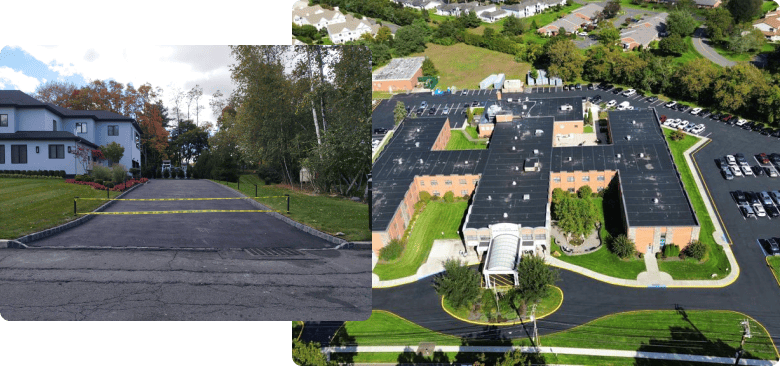
When it comes to managing a commercial property, first impressions matter. One of the first things clients, customers, and partners notice isn’t the office lobby or meeting room decor. It’s the parking lot. Clean, smooth, and well-maintained paving makes a powerful statement about professionalism and attention to detail. If you’re planning to pave or repave a commercial complex, knowing what to expect from start to finish is key to a successful project. Let’s break down the full process so you can make informed decisions every step of the way.
Understanding the Scope of Large-Scale Paving Projects
Commercial properties vary in size and layout, which means no two paving jobs are exactly the same. The scope of the project depends on several factors such as the condition of the existing pavement, the traffic volume, drainage needs, and your long-term goals. Whether it’s a small complex with only a few tenants or a sprawling corporate campus, the preparation and planning stage is crucial.
A good paving project begins with a detailed site evaluation. This is when the paving team visits your location to assess everything from surface damage to grading and slope. It helps determine if a simple resurfacing will do the trick or if a full-depth reconstruction is necessary. Skipping this step could result in costly repairs down the road.
Initial Consultation and Planning Phase
Once the evaluation is done, it’s time to plan. A successful paving project hinges on communication between the property manager and the paving professionals. This phase includes discussing project timelines, budget, materials, potential obstacles, and scheduling needs. It’s also where expectations are set for how the work will impact the daily operations of your tenants and businesses.
Timelines are especially important in commercial environments. Work often needs to be completed during off-hours or weekends to avoid disrupting businesses. A solid plan should include traffic flow management, signage, and temporary access routes to minimize inconvenience to tenants.
Site Preparation and Demolition
Once the plan is approved, the physical work begins. The first step is preparing the site. This might involve demolition of the existing surface, removing debris, and grading the area. Proper grading ensures water doesn’t pool on the surface and helps avoid future cracks and potholes. Drainage solutions, such as stormwater systems or slope adjustments, are often addressed during this stage.
Heavy machinery such as excavators, dump trucks, and graders are used to clear the site. Safety measures are critical during this phase, especially if businesses are still operational. Fencing, signage, and clear communication help keep everyone safe.
Sub-Base Installation and Stabilization
Beneath every durable asphalt surface is a solid foundation. The sub-base provides structural support for the pavement above. Installing it correctly ensures the asphalt surface won’t shift or break down over time.
This phase includes placing crushed stone or gravel and compacting it in layers. In some cases, soil stabilization is necessary, especially if the native soil is weak or prone to moisture. Stabilization might involve lime or cement treatments to strengthen the foundation.
Proper installation of the sub-base not only extends the life of the pavement but also reduces future maintenance needs.
Binder and Surface Layer Installation
After the sub-base is compacted and stable, it’s time to lay down the binder layer. This intermediate layer is made of larger aggregate mixed with oil and provides additional strength. It acts as the “muscle” between the foundation and the top surface.
Next comes the final surface layer. This is the smooth, black asphalt you see in parking lots. It’s made of finer aggregates and creates a finished look. The surface is rolled and compacted to ensure it adheres to the binder and provides a smooth driving experience.
Precision is key in this step. Uneven rolling or poor temperature control can cause issues like bumps, dips, or early deterioration.
Striping, Signage, and Final Touches
With the surface in place, it’s time to make the lot functional. Striping is more than just lines on the ground; it guides traffic, maximizes parking capacity, and ensures ADA compliance.
Painted arrows, accessible parking spaces, fire lanes, and directional signs are added according to plan. These details improve safety and give the lot a polished, professional appearance.
In some cases, additional features such as wheel stops, bollards, and curbing are also installed. These elements contribute to the overall layout and functionality of the site.
Quality Control and Inspection
Before calling it a day, a thorough inspection is done. This includes checking the smoothness of the surface, the accuracy of striping, and the integrity of the drainage system. The goal is to make sure everything meets local codes, industry standards, and your expectations.
During this phase, it’s also common to schedule a final walk-through with the property manager. Any concerns can be addressed on the spot, and punch-list items are completed before the project is officially wrapped up.
Maintenance Planning and Long-Term Care
Once the project is complete, the work isn’t over. A maintenance plan helps preserve your investment. This might include periodic sealcoating, crack filling, and routine inspections.
Many property managers underestimate the importance of regular upkeep. But just like a car, asphalt paving needs attention to perform well over time. Establishing a maintenance routine early on can prevent major repairs and extend the lifespan of your lot by several years.
Having a clear maintenance schedule also helps with budgeting and keeps tenants happy by avoiding sudden, disruptive repairs.
Why Quality Paving Is a Long-Term Investment
Paving isn’t just about appearances; it’s about function and value. A well-paved commercial area enhances curb appeal, improves safety, and contributes to tenant satisfaction. It also plays a role in property value. Whether you’re attracting new tenants or planning to sell down the line, a professionally paved surface signals that the property is well-managed and cared for.
In contrast, cracked, uneven, or poorly marked lots can drive tenants away and lead to liability issues. Investing in quality paving services now saves time, money, and headaches later.
Stay Tuned for More Professional Insights
Now that you know what to expect from start to finish, you’re better equipped to take the next step in your paving project. Whether you’re managing a small office lot or a multi-unit commercial complex, understanding the paving process can save you time, stress, and money.
Want to learn more about optimizing your property and keeping your lot in top condition? Stay tuned for upcoming blog posts with more insights, tips, and guides. Check out this website for more updates and services that can elevate your business park to the next level.







